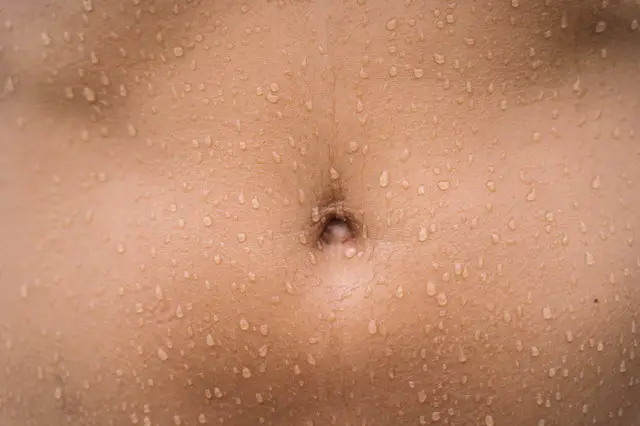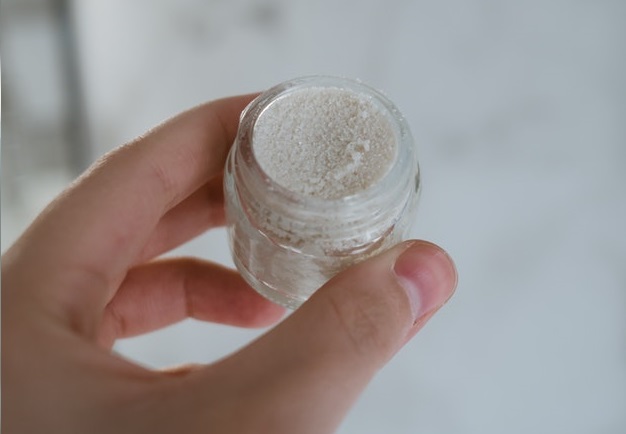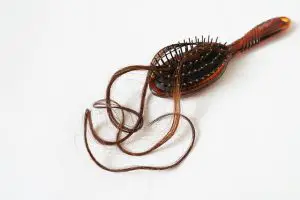After waxing or shaving, sometimes pimples or blackheads form on the skin. These are ingrown hairs. And some parts of the body are more or less prone to it. This is particularly the case with the hairs around the navel. And it can quickly become both socially embarrassing and physically awkward when one of them is painful. That is why we will see in this article what to do about ingrown navel hairs. To begin, we will see the causes that lead to the appearance of ingrown hair in the navel area. Then, we will see the solutions to prevent and get rid of ingrown hairs that are in the navel.
In this section:
The causes responsible for the arrival of an ingrown hair in the navel
By the way, what is an ingrown hair?
An ingrown hair is hair which has failed to penetrate the skin barrier or which has been diverted from its natural direction of growth. As a result it continues to grow but under the skin. Ingrown hairs around the navel, in addition to being inelegant, can be painful, itchy and sometimes even become infected in rare and extreme cases.
The ingrown hair at the navel can appear as a small black dot in place of the hair. It can also sometimes appear as a small red or white pimple and trigger a bump.
Why do I have an ingrown hair in the navel and not elsewhere?
The appearance of ingrown hairs is not the same in people. Some see a lot of it happening and on different areas of the body, while others will only see 5 or 6 appear throughout their existence. We can then ask ourselves, what are the factors involved in the formation of ingrown hairs, mainly around the navel?
- The area around the navel is conducive to the development of ingrown hairs because of various reasons. At first, the skin of the navel is particularly thick. The hairs will therefore have difficulty in piercing it and out. In addition, the hairs located at the level of the navel are generally down. They are thin, and therefore, crossing the skin barrier will be all the more difficult for them. Finally, it is a body area regularly in contact with friction. Fabrics and clothing can bend the hairs, interfere with their usual output, and thicken the stratum corneum. Just as many parameters leading to the development of ingrown hairs.

Other factors related to your genetic makeup and your hair removal habits may be responsible for the appearance of ingrown navel hairs:
- Bad hair removal against the grain, that is to say in the opposite direction to hair growth. This way of doing tends to promote hair breakage and encourages it to grow in the wrong direction. At the same time, by dint of waxing it refines the hair. The finer the hairs, the more difficult it will be to pierce the skin. Finally, the epilator will sometimes break the hair without being able to pull out the hair follicle. The hair then continues to grow under the skin, but often in a direction other than its natural growth.
- A bad shave Such as shaving against the grain can also upset the hair in its natural direction of growth and thus cause its incarnation. In addition, double or triple blade shaving also causes the manifestation of ingrown hairs around the navel. And this is explained because this shaving technique consists of bringing the hair backwards through the first blade, and cutting the hair very short. Therefore, the hair will remain under the skin and will tend to grow in a direction opposite to its normal direction.
- Curly, frizzy and / or fine hair will have a harder time piercing the skin.
- Certain types of skin present more risk: thick and / or dry skin. Regarding thick skin, it is difficult to pierce through the hairs, especially if you use the hair removal method rather than shaving as the latter will become thinner. As for dry skin, it naturally lacks flexibility and the pores of the skin tend to be more cluttered with dead skin, which makes it difficult for the coat to come out.
Solutions against ingrown navel hairs
In order to avoid the formation of ingrown hairs in the navel, the most effective technique remains prevention. Indeed, when the ingrown hair is already present, it is much more complicated to get rid of it. Especially if it is infected, painful or swollen.
What to do to prevent the appearance of ingrown hairs?
In a way to prevent the appearance of ingrown hair in the navel, many tips exist. It may involve modifying certain habits and certain actions. But also to choose products able to act on the concern.
Good habits and good actions to avoid ingrown navel hairs
1 - Avoid epilation and too frequent shaving, as well as white shaving. That is to say, it is a matter of waiting 3-4 weeks for the hair to grow back if you epilate and 2-3 days when you shave. We know of course that for some people it is not possible to stop removing their navel hair which can be complex. In that case, read our tips below.
2 - Exfoliate your skin regularly in order to evacuate the scales (dead skin), to refine the skin texture and to unclog the passage of the hairs so that they can grow normally. Here are the different products you can use to exfoliate:
- a horsehair glove or a kessa glove (more recommended for sensitive skin and areas). The exfoliating gloves will have the role of massaging and exfoliating your skin and thus prevent the arrival of ingrown hairs to the navel.
Which exfoliating gloves to choose? :
- Kessa scrub glove in natural fibers. Brand: Simply Argan
- Kessa Grain medium viscose scrub glove. Brand: Karawan
- a scrub which can be in the form of a specific cream for the scrub, an “exfoliating” soap, or a powder. You can also make it yourself with homemade ingredients: sugar and oil.
Our recommendations for exfoliating products:
- Intense exfoliation cream. Brand: Bodyminute
- Natural exfoliating soap. Brand: Savonnerie du Regagnas
- Exfoliating powder with organic and vegan shea shell. Brand: Karethic
We recommend that you do this exfoliating routine once a week and 1 or 2 days before your waxing. Be careful, remember to hydrate your skin well after each exfoliating routine to avoid drying out the skin.

3 - remember to always hydrate your skin so as to give it flexibility and prevent the dead skin which obstructs the opening of the hair. Keeping your skin hydrated is all the more important when the skin around your belly button tends to be dry. Use a moisturizer (cream or oil) on the skin daily.
4 - Shaving / waxing: alternate between the two methods to get rid of ingrown navel hairs. This is because waxing makes the hairs thinner over time, which can prevent the hair from coming out of the skin. The problem with using the razor is that the hairs grow much faster, so you have to shave very regularly. And in the end, it dries up the skin. The best is therefore to alternate between using a razor (with one blade) and epilation (prefer wax to the epilator).
5 - Avoid waxing or shaving against the grain. For navel hair, it may seem a bit technical. Since the hair around this area does not grow in the same direction, you will need to arm yourself with the patient and be precise. And even if it seems more tedious and longer, this method allows to prevent the twisting of the hair, and to disturb its natural growth.
Ingrown hairs on the navel: which products to use?
1 - Use a razor with a single blade or electric. These types of razors avoid interfering with the normal course of the hair as much as possible. As a result, you will be less likely to see a ingrown hair on the navel. Also, don't forget to clean and disinfect your shaver after each use.
2 - If you choose hair removal as your method, prefer the use of wax rather than the electric epilator. Indeed, the electric epilator can at times break the hairs without removing the follicle. The hair, in addition to being broken, also undergoes traction which can deviate from its natural path of growth. Consequently, the hair will continue to grow but in the wrong direction and it will be ready to incarnate.
3 - The most radical and effective hair removal against navel hair: permanent pulsed light or laser hair removal. These hair removal methods make it possible to permanently and permanently get rid of the hair by destroying the bulb which is responsible for its regrowth.
How to remove an ingrown hair?
So as to eliminate ingrown hairs on the navel, the best still is not to touch it and to wait for the body to eventually evacuate it on its own. You can of course try to accelerate the phenomenon by doing exfoliating treatments gently and only on ingrown hairs that are not infected.
Do not try to remove your ingrown hair with your fingers or with tweezers. Especially when your hair is sore or swollen. However, when the ingrown hair is just below the surface of the skin, and it's not swollen or painful, you can try to remove it by doing the following:
- One or two days before depending on the sensitivity of your skin, gently exfoliate the area where the ingrown hair is.
- Before removing the hair, plan a hot bath or shower or put a hot compress on the area to be treated so as to open the pores of the skin as much as possible.
- Pinch on one side and the other of the ingrown hair in order to extract it from the epidermis. Be careful not to squeeze too hard. If you can't get the hair out, try again a few days later.
- Using disinfected tweezers, remove the hair.
- Disinfect your skin.
Finally, a 100% natural solution that works very well is to use tea tree essential oil by applying it to the hair in question. The latter boosts healing and accelerates the expulsion of ingrown hair on the navel area. To use it, put a drop of this essential oil once a day on the ingrown hair. The hair should eventually come out on its own.
Which healthy, organic and pure tea tree essential oils to adopt? :
- Organic Tea Tree essential oil - 5ml Brand: Mycosmetik
- Pure and organic essential oil of Tea Tree - 30 ml. Brand: Bioflore







